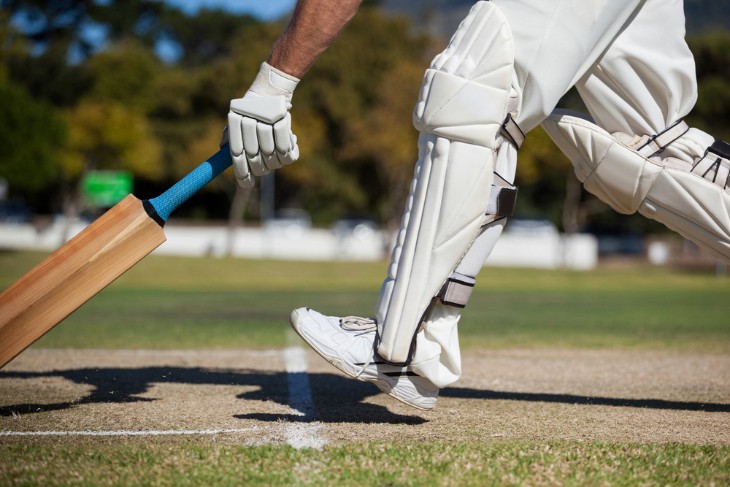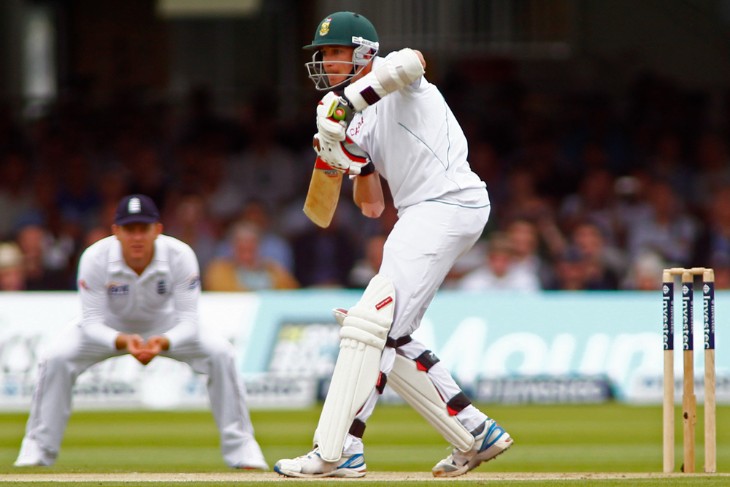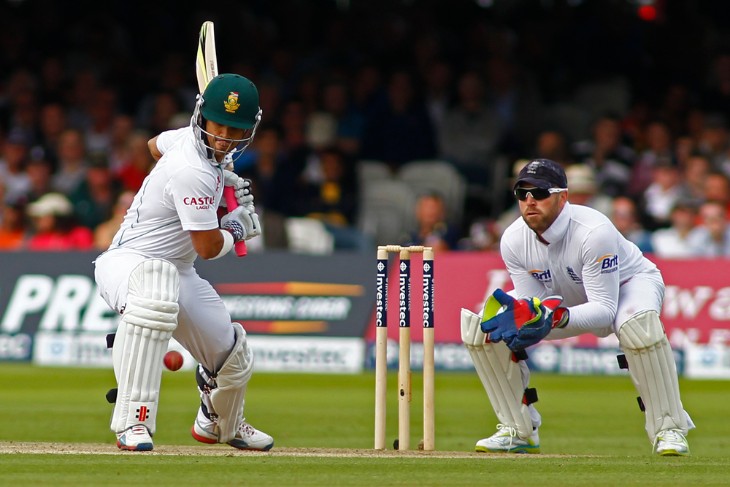Introduction
Cow Corner is a colloquial term in cricket referring to a specific region on the field, typically the square of the batsman's position on the leg side. It is located between deep mid-wicket and wide long-on. The term "Cow Corner" is said to have originated from the idea that only a cow grazing in that far corner of the field would be in danger of being hit by a mishit shot. It is considered a relatively unguarded area, making it a popular target for aggressive batsmen aiming to hit sixes. However, it's also considered a high-risk zone, as mistimed shots in this direction can lead to easy catches for fielders. The strategic placement of fielders in Cow Corner is crucial for the bowling team to prevent or capitalise on big hits, making it a dynamic and strategic area on the cricket field.
The Origins of Cow Corner
The term "Cow Corner" in cricket has its origins in the 19th century, and it carries a whimsical tale behind its creation. The name emerged from the rural landscapes of England, where cricket was often played in open fields shared by both livestock and cricketers. Legend has it that in these pastoral settings, a particular corner of the field, located between deep mid-wicket and wide long-on, was a common grazing spot for cows.
The audacity of aiming for such an unconventional spot led to the term "Cow Corner" being coined. Over time, this term has become a beloved part of cricketing lore, representing not only a specific region on the field but also a nod to the sport's rustic roots. It stands as a testament to the enduring charm and idiosyncrasies that define the language and culture of cricket.
The Location of Cow Corner on the Cricket Field
Cow Corner is a colloquial term used in cricket to describe a specific region on the field. It is situated on the leg side, typically between deep mid-wicket and wide long-on. This area is approximately halfway between the square leg and long-on positions. The exact positioning of Cow Corner can vary slightly depending on the fielding team's strategy and the specific dimensions of the cricket ground.
Cow Corner is considered a high-risk, high-reward area for batsmen. It is often a target for aggressive hitters aiming to dispatch the ball for a boundary, particularly in limited-overs formats like One Day Internationals (ODIs) and Twenty20 matches. However, mistimed shots in this direction can result in easy catches for fielders, making it a calculated gamble for the batsman.

Fielding Positions in Cricket
In cricket, fielding positions are specific locations on the field where players position themselves strategically to defend against the batsman's shots and attempt to take wickets. Here are some key fielding positions:
1. Slips: These fielders stand behind the batsman on the off side, positioned to catch any edges that may be produced from the bat.
2. Gully: Located beside the slips, the gully is also a catching position for balls hit on the off side.
3. Point: Point stands square of the wicket on the off side, covering the area between cover and third man. This position aims to stop or intercept cuts and drives.
4. Cover: Positioned on the off side, the cover covers the area between the point and mid-off. They aim to field shots driven or cut towards them.
5. Mid-off: This fielder is stationed straight in front of the batsman, closer to the bowler. They're responsible for intercepting straight drives.
6. Mid-on: Like mid-off, mid-on is directly in front of the batsman but on the leg side. They aim to stop shots hit straight down the ground.
7. Long-off and Long-on: These fielders are stationed far back near the boundary. They're primarily responsible for retrieving and returning long shots.
8. Deep Mid-wicket and Deep Square Leg: Positioned deep on the leg side, these fielders patrol the areas where batsmen frequently hit powerful shots.
9. Fine Leg: This fielder stands behind the batsman on the leg side, closer to the boundary. They're in place to catch any flicks or glances.
10. Third Man: Situated behind the batsman on the off side, near the boundary, the third man aims to catch edges or field shots that go behind the wicketkeeper.
11. Short Leg: This is a close-catching position on the leg side, positioned near the batsman. It's a challenging position due to its close proximity to the striker.
12. Silly Point: Similar to short legs, silly point is a very close catching position on the off side, aiming to catch any mistimed shots.
13. Forward Short Leg: A slightly deeper version of silly point, this fielder is also placed to catch close-in shots.
14. Deep Cover and Deep Third Man: These fielders are positioned on the boundary, covering areas not easily reachable by the inner ring fielders.
Identifying Cow Corner
Identifying Cow Corner in cricket is essential for both batsmen and fielders. Cow Corner is a specific region on the field, typically located on the leg side. It is positioned between deep mid-wicket and wide long-on. Here's how to identify Cow Corner:
1. Visualise the field: Imagine the cricket field as a rectangular playing area. The area in question, Cow Corner, is situated towards the leg side, halfway between square leg and long-on.
2. Understand the Off and Leg Sides: In cricket, the field is divided into two main sides: the off side and the leg side. The off side is where the batsman's dominant hand (right or left) faces, while the leg side is on the opposite side.
3. Locate Deep Mid-Wicket and Long-On: Cow Corner is positioned between these two fielding positions. Deep mid-wicket is on the leg side, not too far from the batsman, and long-on is a bit deeper, closer to the boundary.
4. Visual Clues: Look for fielders stationed in this area. If you see players positioned between deep mid-wicket and long-on, you're likely in Cow Corner.
5. Consider the Batsman's Perspective: For the batsman, Cow Corner is a popular target for hitting powerful shots. It's a region where they aim to send the ball for a boundary or a six.
6. Awareness of Gameplay: Cow Corner is often used strategically in limited-overs formats like One Day Internationals (ODIs) and Twenty20 matches, where aggressive batting is emphasised.
The Significance of Cow Corner in Cricket Strategy
In cricket, there are usually two batsmen on the field at any given time. The objective of the batting team is to score runs by hitting the ball and running between the wickets, while the fielding team aims to dismiss the batsmen or restrict their scoring.
1. Position on the field:
- Cow Corner is a fielding position in the sport, located in the deep mid-wicket region. It is typically between deep mid-wicket and long-on.
2. Batsmen's Perspective:
- When a batsman is on strike, "cow corner" is usually behind and to the leg-side of them.
3. Shot Selection and Risk:
- Hitting towards Cow Corner is considered a high-risk, high-reward shot. It's a long boundary, so if a batsman connects well, they can score a lot of runs.
4. Bowling Strategy:
- Knowing the significance of cow corner, bowlers might adjust their line and length to exploit this. They may try to bowl on or outside the off-stump to make it harder for the batsman to play across the line towards Cow Corner.
5. Field Placement:
- The fielding team may place fielders strategically in cow corners based on their understanding of the batsman's tendencies. They might have a fielder patrolling the area or position one there for specific bowlers or situations.
6. Tactics and Game Situation:
- Depending on the match situation, a batsman might target cow corner to accelerate the run rate, especially in limited-overs formats like One-Day Internationals (ODIs) and Twenty20 Internationals (T20Is).
7. Variation in Fielding Positions:
- In modern cricket, especially in the shorter formats, fielding positions are often adjusted dynamically based on the specific batsman's strengths and the bowler's tactics.
The Role of Cow Corner in Modern Cricket
1. Aggressive Batting Approach:
- In limited-over formats like T20s and ODIs, where aggressive batting is crucial, cow corner remains a target for batsmen looking to score boundaries. With fielding restrictions in place, batsmen aim to take advantage of the vacant spaces.

2. Power-hitting and six-hitting:
- Cow Corner is a prime area for power-hitters, who aim to clear the boundary for a six. Many modern batsmen, especially in T20 cricket, are proficient in hitting sixes, and Cow Corner is one of the preferred areas for this purpose.
3. Adjustable Field Placements:
- In modern cricket, field placements are highly adaptable. Captains and fielding teams frequently adjust their fielders based on the batsman's tendencies and the bowler's tactics.
4. Variations in Bowling Tactics:
- Bowlers are aware of the significance of cow corner, and they might vary their line and length to exploit this. They might bowl wide outside the off-stump to force the batsman to play towards that region, or they might mix up their pace and lengths to keep the batsman guessing.
5. Reverse Sweeps and Innovative Shots:
- Modern batsmen have a wide array of shots at their disposal, including unorthodox and innovative strokes like the reverse sweep. Cow corner can be a target for these shots as batsmen try to manipulate the field and find gaps.
6. Fielding Strategies:
- Fielding teams may deploy their best fielders or boundary riders in the Cow Corner region if they anticipate that a particular batsman is likely to target that area.
7. Impact on Fielding Positions:
- With the advent of data analytics and technology, teams have become more precise in positioning their fielders. They use statistical insights to position fielders in areas where batsmen are more likely to hit.
8. Adaptation to Different Formats:
- The significance of Cow Corner may vary across different formats of the game. In Test cricket, where the pace of play is generally slower, the importance of the cow corner might be less pronounced compared to fast-paced T20 matches.
Bottom Line
In cricket, "Cow Corner" refers to a specific fielding position on the field, situated between deep mid-wicket and long-on. It is a region where batsmen often target to score runs, especially in limited-over formats like one-day internationals (ODIs) and twenty20 internationals (T20Is). The term is derived from the idea that hitting towards this area is considered a risky shot, akin to a "wild swing" in rural cricket where cows might be grazing nearby. Batsmen who aim for Cow Corner typically play shots across the line of the ball. This strategy can yield high rewards if executed correctly, as the boundary in this area is usually distant. However, it also carries a significant risk of being caught by fielders patrolling the boundary. Bowlers often adjust their tactics to exploit this region, aiming to make it harder for batsmen to play this shot effectively. In modern cricket, fielding strategies are dynamic, and players are positioned in Cow Corner based on the specific batsman's tendencies and match circumstances.
For more information:


